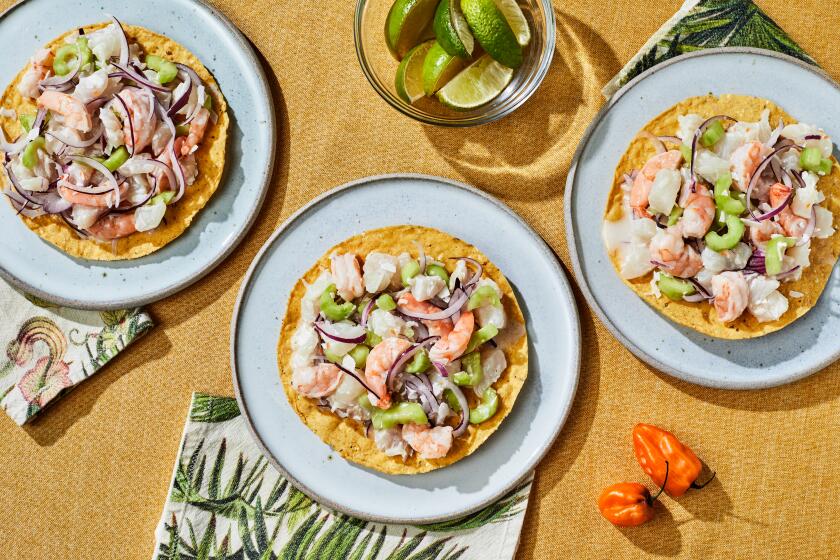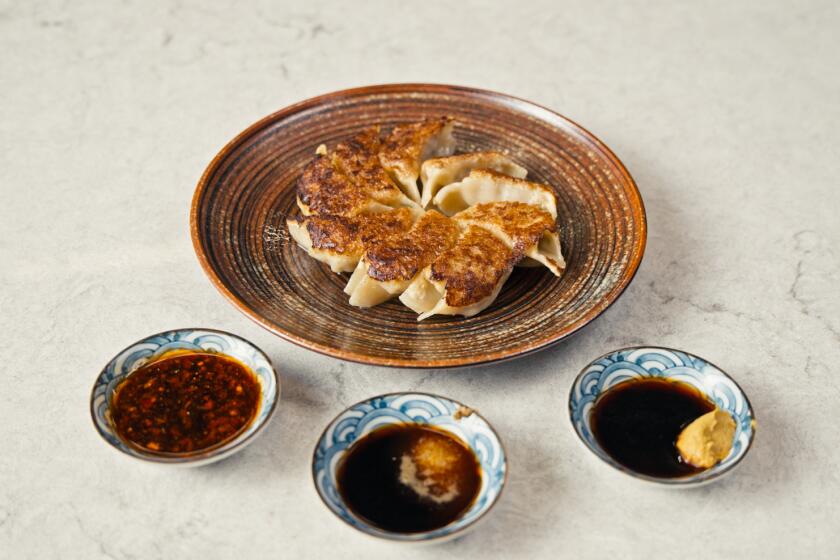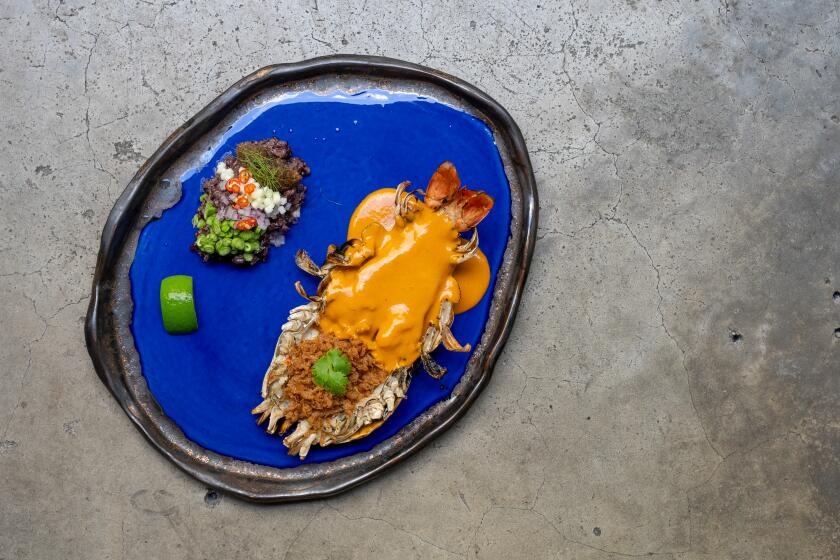Savory granola
It’s a coolish October morning. You’re invigorated by your morning run or yoga class -- and famished. At home, before dressing for work, you breathe in the heart-gladdening aroma of coffee and then, amazingly, something that’s even better: the seductive, toasty fragrance of roasted grains, seeds, nuts and spices.
Just-baked granola. It’s autumn comfort in a bowl -- and high-quality fuel to boot. And easy? Can you measure, stir and spread some stuff on a baking sheet? You’re golden.
There are some foods so elemental, so satisfying, that although they represent an ancient cooking idea, they’re reinvented in each era. The combination of toasted grains and nuts that we call granola (or “grainola” or “grunola” in some old cookbooks), a name that dates from the 1800s, is one.
But with each generation’s rediscovery, it seems this essentially homespun, wholesome food is burdened with unnecessary ingredients that mask its appeal.
Granola’s making a comeback -- again. Well-regarded restaurants, bitterly hip coffeehouses, luxury hotels and artisanal bakeries tout their often super-luxurious versions stuffed with whole nuts and exotic dried fruits. But the tendency is toward a richness achieved with lots of sweeteners and fats. Too much of either -- and it’s incredibly easy to step over the line -- flattens the flavors and textures of the cereals and seeds that are the heart and soul of a great granola.
Let’s get one thing straight: Great granola is not crumbled cookies. And in spite of the spin, whether the granola’s made by a coffeehouse staffer or a restaurant pastry chef, it’s invariably too sweet.
Cookbook recipes -- whether published in the bulk-grain-loving ‘70s, the go-with-oats ‘90s or Whole-Earth-meets-suburbia present -- are the same. They not only call for lots of butter and brown sugar but also require multiple stages of cooking so as not to scorch particular ingredients such as dried fruit.
A great granola has crunch, meltiness, warmth, savory, a bit of spice -- it’s all there, not weighed down by sticky or overwhelmed by sweet. There’s interplay: light, crisp oatmeal flakes and smoky, earthy bits of pecan in one mouthful. Or a chewy, mysteriously sweet tangle of coconut combined with the firm, toasty bite of slivered almond. You just need half a cup per serving it’s so filling, but that half a cup makes for a happy whirligig of flavors and textures.
Once you start experimenting with unsweetened granolas, you’ll find that because dried fruit is not soaked or softened, it comes across in this context like little nuggets of candy, adding only calories. Instead, wait till the granola’s in the bowl, then play the fragrance of toasted grains against fresh fruit -- seasonal or always-available tropical. It provides the exact, right note of cool, slightly acidic contrast, as does plain unsweetened yogurt.
Moving away from using dried fruit allows for an incredibly simple quick-cooking method. And there’s an easy rule of thumb for combining complementary flakes, seeds, nuts and meals -- it’s almost a “one from column A, one from column B” approach -- that helps you keep in mind how they play off one another and become so pleasing in concert. It’s a simple approach to making a small batch of granola so good that although it’ll keep for a few days, it may not be around even that long.
Once I figured out how to do it, I got hooked on making a batch of granola once or twice a week, mixing the dry ingredients the night before, then in the morning, simply tossing in the oil, juice, and/or flavorings and baking for the mere 15 or 20 minutes it takes.
For each batch, begin with rolled oats, the signature ingredient of granola. Next add a contrasting textural basic -- unsweetened coconut flakes, usually. Follow with smaller amounts of a meal of some kind -- wheat germ, nut meal, corn meal, ground flax -- and small seeds (sesame, sunflower, pine nuts) or chopped nuts. Add the showoff ingredients: large whole (or halved) nuts or seeds such as cashews, almonds or pumpkin seeds. Add a small amount of canola oil and a touch of liquid (such as prune juice or maple syrup).
Pecan-pepita granola is a wonderful basic granola that has a light, crunchy base of oatmeal, coconut and wheat germ that gains depth with the addition of pecans daintily spiced with cinnamon. Almond-cashew granola is a bit more luxurious and, depending on the kind of nut meal used, takes on almost creamy notes (with almond or hazelnut meal) or an intriguingly bitter crunch (with flaxseed meal).
And if you’re an inhabitant of the savory breakfast universe, whether your favorites are miso soup and pickles, leftover pizza or rice and beans, try the savory granola recipe. Spiced with cumin and mustard seeds, it’s also great with yogurt -- for lunch or an afternoon snack, maybe, after a trip to the gym.
Once you’ve measured in your chosen ingredients, just toss to combine and coat, then spread the mixture on a baking sheet and bake (now’s the time to grab a shower or check your e-mail). When the granola’s golden brown, pull it from the oven and allow it to cool (say for about the time it takes to read the funnies and the op-ed pages). One spoonful will take the edge right off your day.
Heat the oven to 350 degrees. In a bowl, combine the rolled and steel-cut oats, the wheat germ, sunflower seeds, sesame seeds, pine nuts, pumpkin seeds, mustard seeds, cumin seeds, oil and Worcestershire sauce. Stir well.
Spread the mixture on a lightly oiled cookie sheet. Bake for 15 to 20 minutes until golden brown, stirring once for even toasting.
Allow the granola to cool on the cookie sheet. It can be stored in an airtight container for no more than one week. For each serving, combine one-half cup granola with one-fourth cup each plain yogurt and diced fresh fruit.
Get our Cooking newsletter.
Your roundup of inspiring recipes and kitchen tricks.
You may occasionally receive promotional content from the Los Angeles Times.















